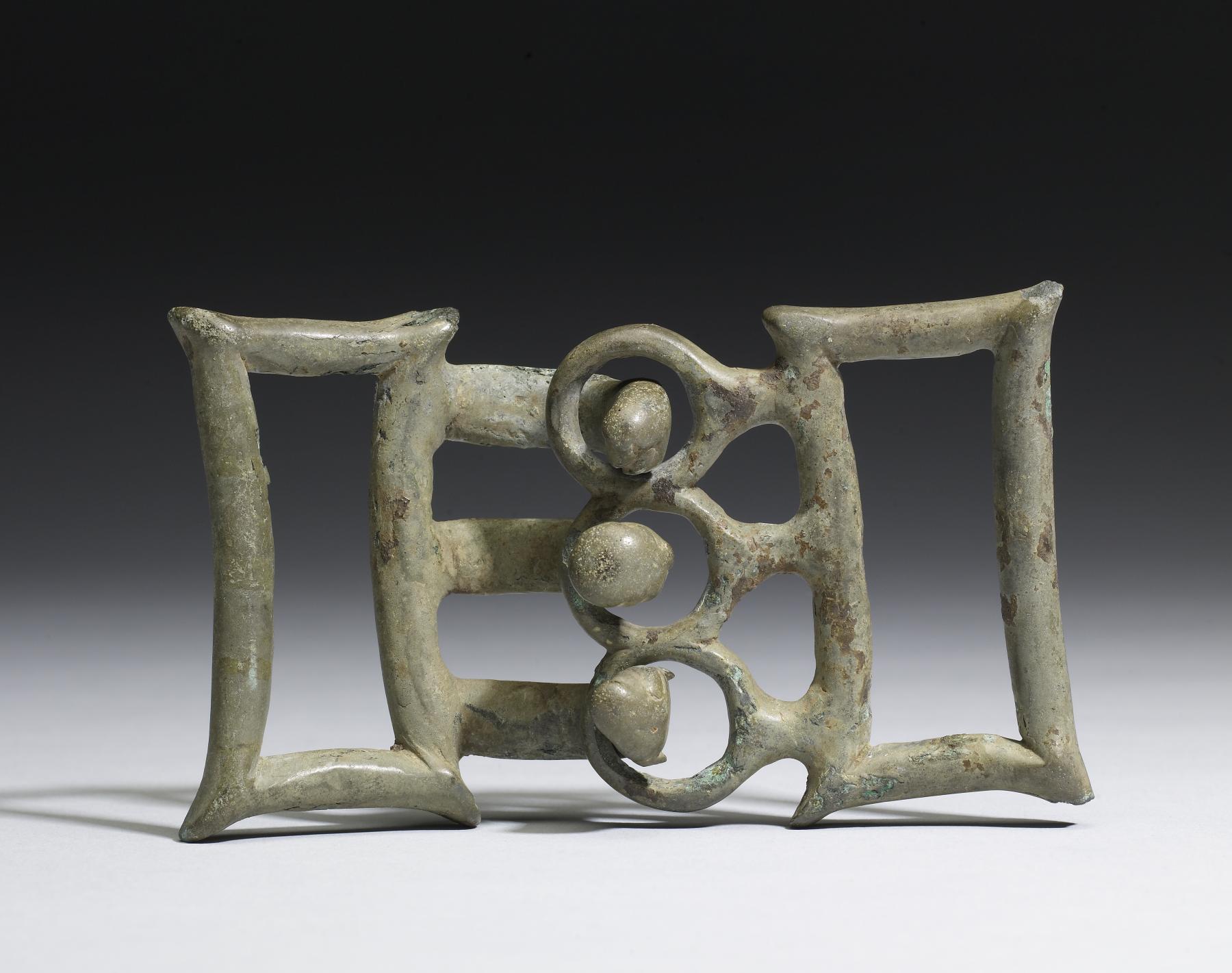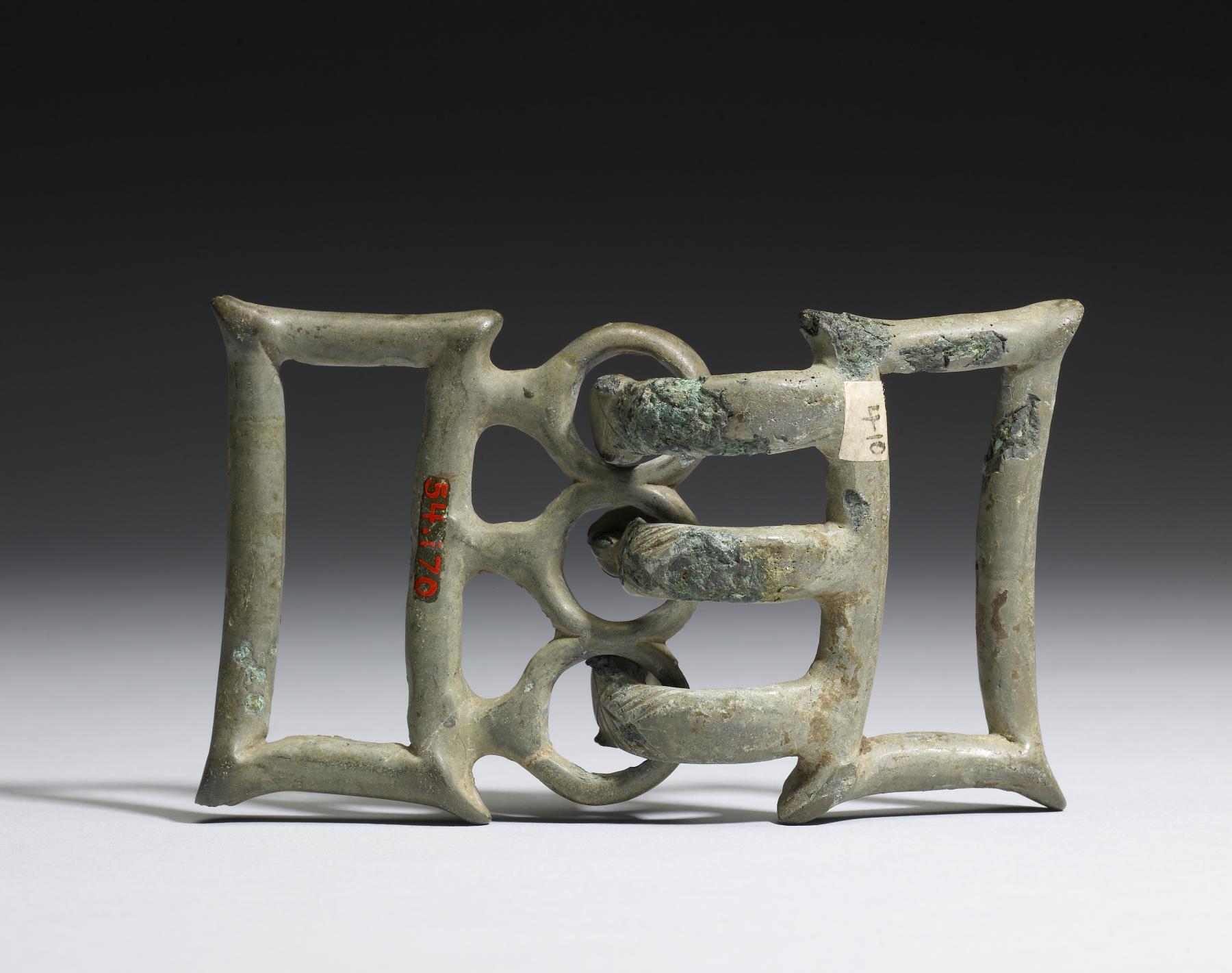Belt Buckle
(Roman Empire )
The 7th to early 6th centuries BCE are known as the Orientalizing period because of the many eastern, or "Oriental," elements in the art. In this prosperous era of international trade, Etruscan artists manufactured luxury goods, such as those seen in this case, that reflect influences from the art of the eastern Mediterranean.
This buckle consists of two pieces that would have been attached to either end of a leather or cloth belt. The three loops of one piece connect with three corresponding hooks in the form of snake or animal heads on the other. This type of buckle appears to be inspired by Near Eastern examples.
Provenance
Provenance (from the French provenir, 'to come from/forth') is the chronology of the ownership, custody, or location of a historical object. Learn more about provenance at the Walters.
Henry Walters, Baltimore, 1929, by purchase; Walters Art Museum, 1931, by bequest.
Geographies
Italy (Place of Origin)
Measurements
2 7/16 x 4 1/16 x 1 1/4 in. (6.2 x 10.4 x 3.2 cm)
Credit Line
Acquired by Henry Walters, 1929
Location in Museum
Accession Number
In libraries, galleries, museums, and archives, an accession number is a unique identifier assigned to each object in the collection.
In libraries, galleries, museums, and archives, an accession number is a unique identifier assigned to each object in the collection.
54.170




